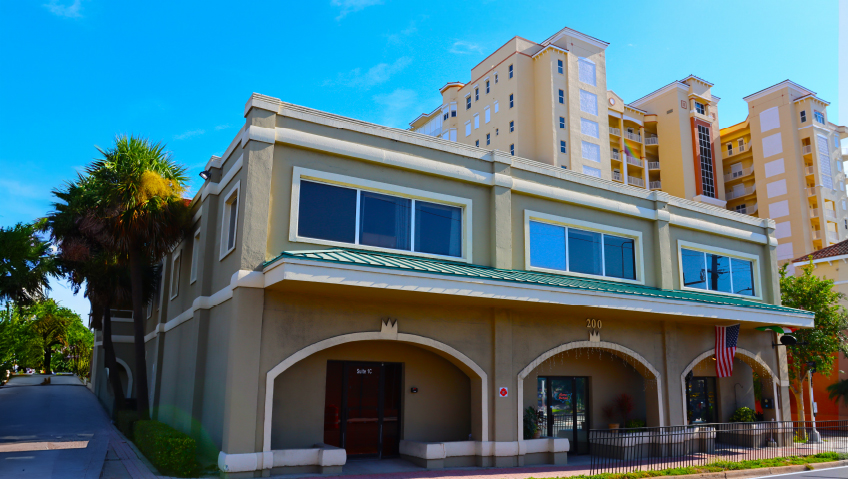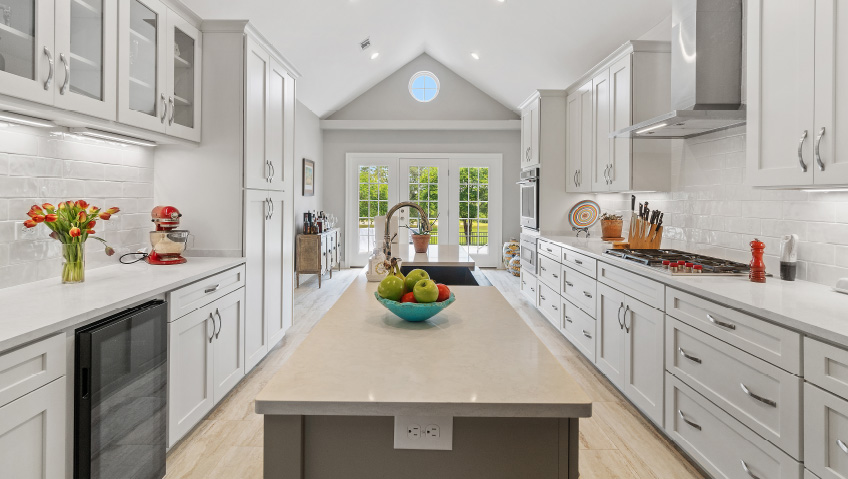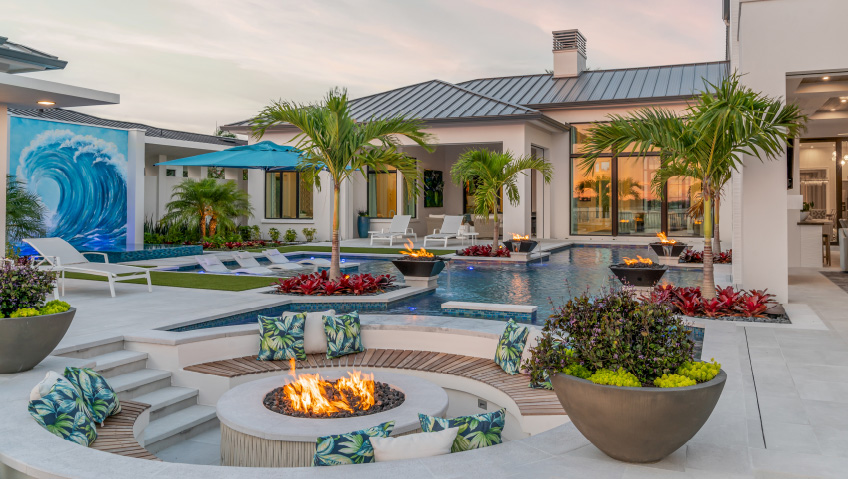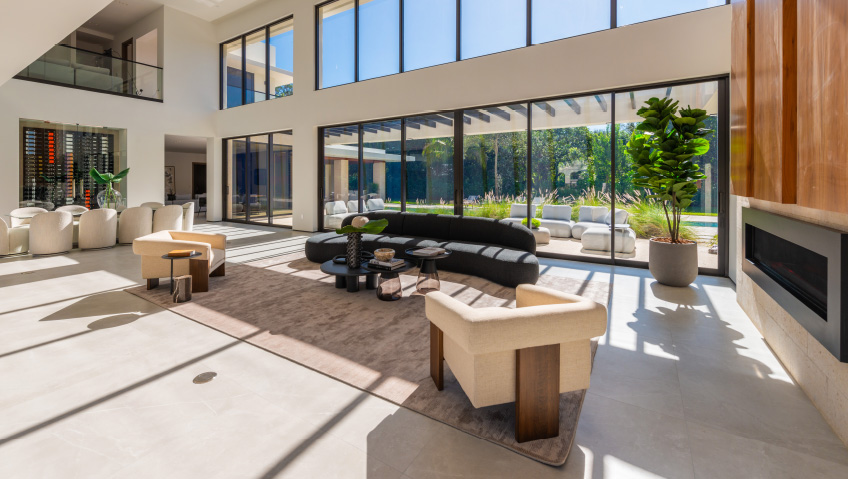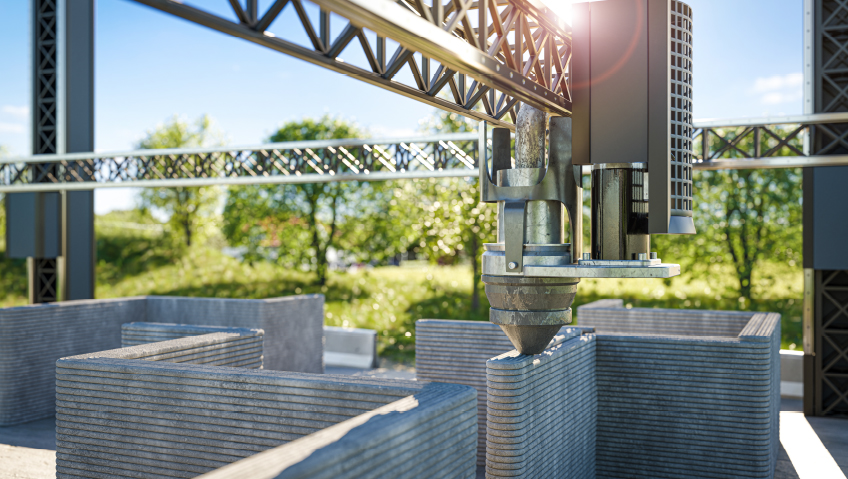Home Nation, with corporate offices in Cocoa Beach, Florida and nine branch offices and showrooms across the U.S., delivers affordable homes to families across the nation, just as its name says.
A family-owned business, Home Nation has been a national dealer of new and pre-owned manufactured (mobile) homes, modular homes, and prefabricated homes since 2008, and since 2020, has been the design/builder of the hybrid eHome, which has the potential to revolutionize the home building industry.
The company was founded by Paul Comino and his wife Roxanne in Indiana, where it still maintains one of its branches, during the 2008 recession. “We saw the need for more affordable homes, and now I like to say that we have a home for every budget, whatever that budget is,” says Paul Comino.
Back to the beginning
The oldest of six children born to a Greek immigrant to Australia, Comino emigrated to the U.S. in 1984 with two suitcases and $900 in his pocket, found work with an electrical company, met Roxanne, who he recalls as “a wonderful young woman,” and got married. Together they went on to have eight children, who as adults are now involved in the family business themselves.
While working for the electrical company, Comino studied to become a master electrician, bought the business, learned about other aspects of home building, and eventually became a builder himself. “In the ’90s and early 2000s, I was building one- and two-million-dollar homes, and those were extremely nice homes at a time when a million dollars went a lot further, but I turned my back on the custom home industry to focus on affordable housing when I saw a tremendous need across the country,” he says.
In the beginning, the company did remodeling of older homes to bring them up to code, but evolved to become a dealer for single- and double-width mobile homes when Comino realized this was a more efficient way to get families housed quickly and securely. Mobile homes, now referred to as manufactured homes, are manufactured to a national code and delivered from the factory to a site—either a mobile park or privately owned land if zoning permits—and set on a permanent base, with Home Nation assisting with financing.
But in terms of helping to alleviate the affordable housing issues that affect every part of the country, Comino realized Home Nation was addressing only five percent of the market, “although we were doing very well there.” This led the company to offer modular, factory-built homes alongside site-built homes, while keeping all affordable.
However, both factory-built and site-built homes have their inherent issues that can drive up the cost, no matter how much the builder intends to keep it down. Without question, building a home in a factory is an economical and efficient way to build the house itself; but arranging for logistics, permits, and transporting several large modular units from the factory to the site, renting a crane to lift them into place, and preparing two flooring systems—one on the module and one on the site—can add $30,000 to $50,000 to the original cost.
“This is one of the main reasons why modular homes may not be getting widespread buy-in in the market—because of the constraining considerations inherent in the model of building an entire home in a factory, shipping it, and lifting it onto a foundation that duplicates the cost of the floor system that was built in the factory,” Comino explains.
The coming of the hybrid eHome
Then, during COVID, he says, “I started thinking about a more efficient way to build a home when I couldn’t get one delivered, thinking what I could do differently to leverage the advantage of factory-built modules, without the downside of high transportation costs.”
His solution—an affordable house built on-site with a combination of modular, prefabricated, and stick-built construction—is both elegant and simple. Surprisingly, no one had thought of it before, as far as Comino knows. “The idea I had involved extracting part of the home—the kitchen, bathroom, and utility room—and putting that in one small module that becomes the core of the home, with everything built out around it,” he explains.
“In the module, we install 80 percent of the MEP (mechanical, electrical, and plumbing systems), the HVAC (heating, ventilation, and air conditioning systems), and all the fixtures, appliances, and cabinetry. Then all that needs to be done once the module is installed and the rooms built around it, is to install wiring for lights and electrical outlets.”
Once the core module is in place on a poured foundation, the construction team from Home Nation builds around it with a simple construction method using SIPs (structural insulated panels, also built in the factory and shipped to the site with the module), doors, and windows. As the core module is relatively small compared to an entire house, and the unassembled panels are flat, transporting them to the site is much easier and far less costly than transporting fully constructed modules. Homeowners can also cut costs if they elect to do some of the interior finish work themselves—drywalling, painting, and adding trim.
But the real beauty of the eHome model is that it lets homeowners build a house constrained only by the specifications they can afford and what zoning permits allow. Since they’re not restricted by transportation safety regulations and costs, and because it’s a conventionally built house, it’s not restricted to mobile home parks or, in the case of modular homes, to zoned areas of a municipality.
Comino is upbeat about these developments: “We now have two factories up and running, and they’ve proven to be cost-effective right from the beginning.”
As he explains, the start-up cost to build a factory designed to build small modules and only three different module prints is approximately $400,000 and can be completed in 90 days, as opposed to the approximate $250 million needed to build a factory capable of handling the complexity of entire custom-designed modular homes, and which may take up to two years to complete. “This means a factory we build to accommodate the eHome model can be up and running in 90 days in any state in the country, whereas it could take up to two years for a large modular home factory to start production,” says Comino.
“I think it could revolutionize the housing market. We call it the SAFE way to build—Simple, Affordable, Fast, and Energy-efficient—because the SIPs we use for the exterior have a very high R-value, way ahead of what the local and state building codes require, making it energy-efficient and economical.” This new way to build homes from Comino’s company has proved to be so efficient, economical, and affordable that Investopedia has chosen Home Nation’s e-Home as the most affordable starter home option for two years in a row.
The consumer in the driver’s seat
“Putting the consumer in the driver’s seat” is how Comino likes to describe the way Home Nation’s online business model allows the potential home buyer—anywhere in the country—to control all the options, from choosing the home and financing it to signing the contract. “We’re putting the consumer in the driver’s seat so they can get the best home to meet their needs for less money—whether manufactured, modular, conventionally site-built, or an eHome.
The company’s membership in the Florida Home Builders’ Association of America (FHBA), says Comino, is “great for meeting other industry professionals and gives you a real feel for where the market is going. The market drives our business, and the market is calling for a new way to build. That’s what we’re providing with the eHome,” he says.
“With stock market volatility and the possibility of a recession, I think our product is looking even more interesting and affordable as we combine the benefits of a factory-built home with a custom-built one at an affordable price, which allows families to thrive.”
And that—a brilliant insight bringing a chance to thrive to every family—has also turned out to be Home Nation’s chance to thrive.
Visit www.homenation.com to find out more.

